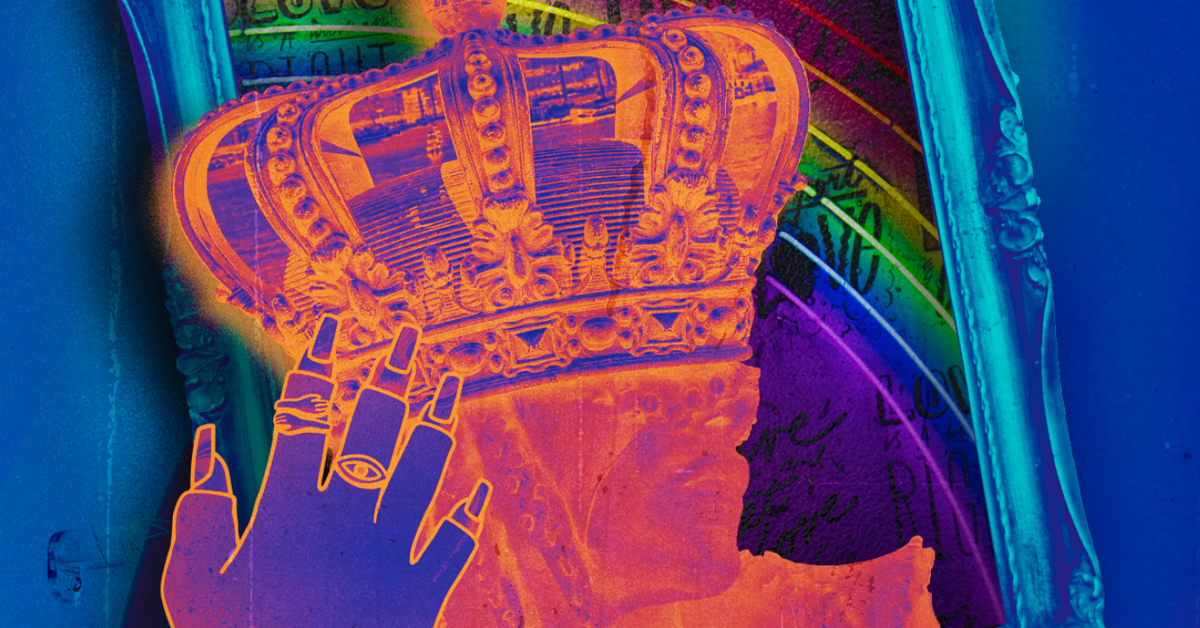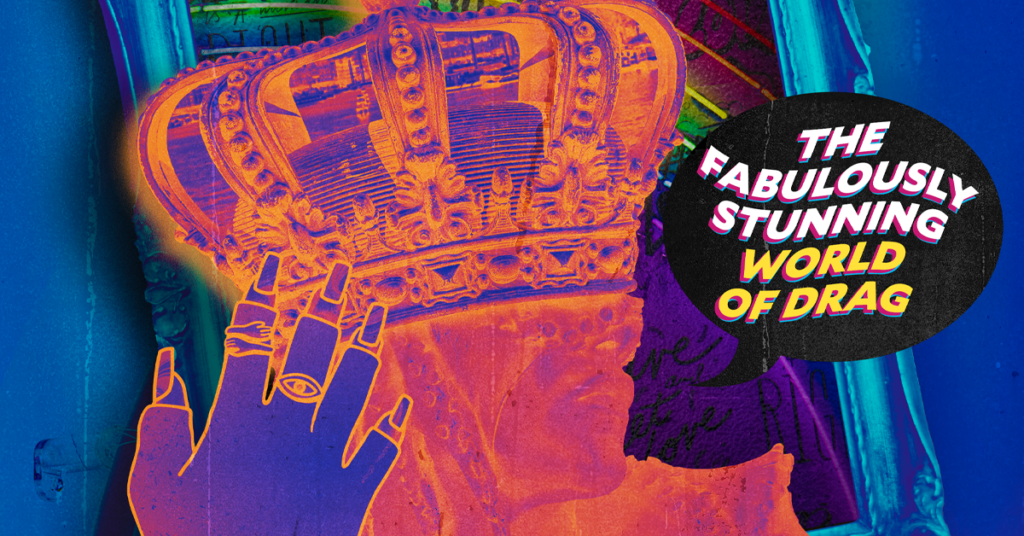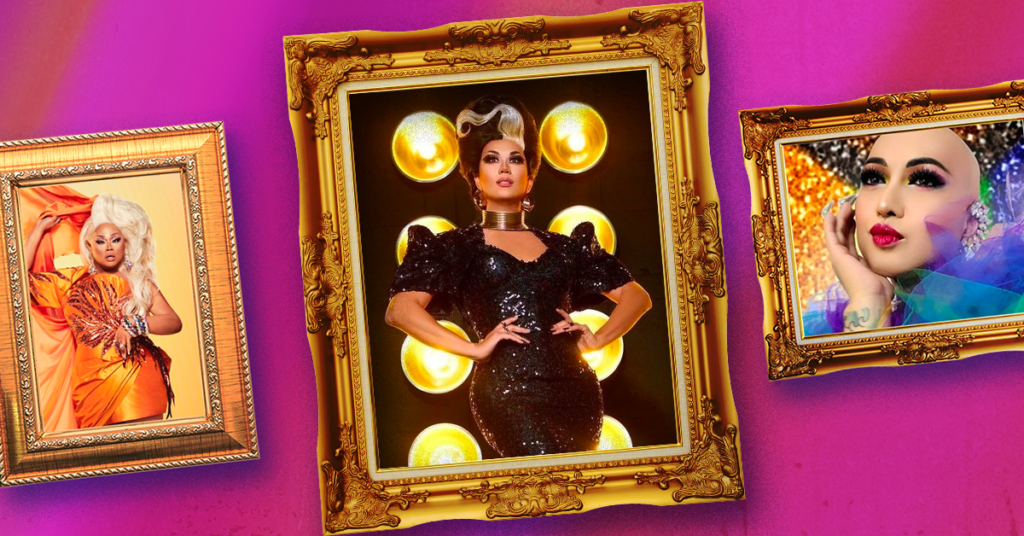The original RuPaul’s Drag Race (RPDR) has been on air since 2009, and it still continues to take the world by storm. Meanwhile, Drag Race Philippines will finally air this year, and with it will come the inevitable (and much needed) introduction for the uninitiated. So, what exactly is drag and why does it have the gays (and the girls) on a chokehold? Is it solely because of the colorful, extravagant outfits, the glitz and the glam, and the graceful, exaggerated performances on stage? Or is there more to it than meets the eye?
Let’s spill the tea.
Our history with drag goes way back – farther than you think, actually. People have been cross-dressing since the dawn of civilization, whether it be for entertainment, or spiritual purposes. At the cusp of the 16th century, men portrayed female characters in theater as then regulations forbade women from performing on stage. Sources also claim that it is also where the term itself originated, ‘drag’ referring to the way said performers’ clothes dragged on stage.
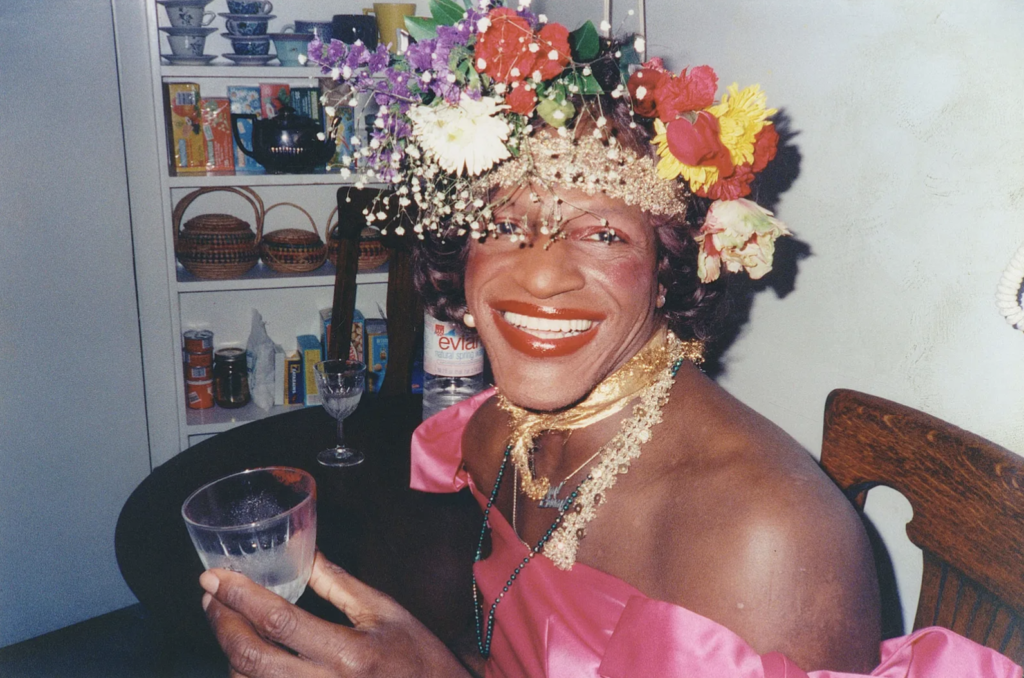
The drag we know today was spearheaded by queer people of color in high, glittery stiletto heels. They dressed up and performed in underground drag balls to escape reality for a while, and fulfill their fantasies of opulence, and grandeur. But, they were also at the forefront during the fight for liberation for the LGBT community in the late 20th century, one of them being the iconic Marsha P. Johnson, a gay liberation activist and self-identified drag queen.
So, it’s never just about the glitz and the glam. It’s also about freedom. Numerous pieces of media about the culture of drag have been made over the years, but Paris Is Burning (1991), and Pose (2018) are definitely a must-watch if you’d like to get to know the queens who ruled the New York drag ball scene in the late 80’s.
Drag today, and tomorrow
Whether the general public likes it or not, drag is here to slay another day. One might even say, it’s in our blood, just like singing. In fact, three Filipino drag queens competed during the first four seasons of RuPaul’s Drag Race – Ongina, Manila Luzon, and Jiggly Caliente. This representation certainly helped encourage more Filipinos to go out and join the race, and since then, more have gone on to join the show’s several spinoffs.
The show itself is addictive, and its fans can attest to this. You watch one episode, and soon find yourself bingeing til the finale. To some, it’s their gateway into the world of drag. “I saw a clip from one of Season 6’s challenges where Violet Chachki did this gorgeous outfit reveal, and I was like, “Oh my god. I need to watch this,” Bea, a fan of RPDR from Quezon City stated. For her, she fell into a deep rabbit hole after finishing one season. When asked what she loves most about drag, she said “Hats off their make-up looks. It’s insane just how much talent, creativity, effort and patience they have to create their mug.”
Indeed a lot of effort does go into drag, and that is exactly what inspires Lance, a creative from Quezon City. To him, the out-of-the-box creativity that the queens showcase in each episode is what drew him closer. A lot of the themes, and looks on the show have inspired his works, and he also mentioned owing some of his confidence to the colorful personalities of the queens that have competed for the crown.
The rise of Filipino Drag Queens
For this article eleganza extravaganza, POP! and INQUIRER.net got in touch with three local drag queens who had a lot to say about the art form, and its growing community in the Philippines. Please welcome to the stage…
Naia (@naia.mnl)
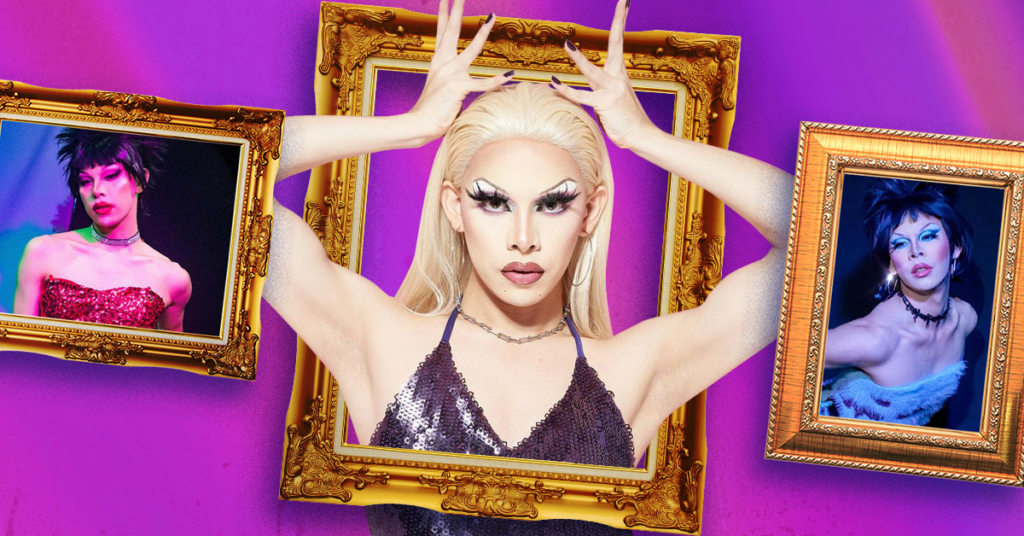
Naia, a proud Libra, is a 25-year-old drag queen who resides in Las Piñas city. Having officially debuted in the local drag scene in December of 2019, most of her drag was done during the start of the pandemic. Now, she’s spreading her wings.
Who or what got you into drag?
“What introduced me was RuPaul’s Drag Race. That prompted me to go to my first drag show in Malate. First time kong makakita ng mga local queens mag-perform. I did my research kasi for class about drag queens – for my broadcasting class we got to talk about pop culture, and drag queens. Apparently one of my friends from grade school did drag. She introduced me to the queens back stage. It started with consuming the media in my house, just alone with my laptop, parang – “Wow, I can get into this. This seems..fun.” I like a good challenge eh, and drag is so challenging.”
View this post on Instagram
How has drag been since the Pandemic began?
“Oh god, I mean, alam mo yung feeling na gusto mo na mag take off at mag fly away, pero biglang nagsara ang lahat so you’re forced to stay in your room, be a bedroom queen.. I think I made the most out of it, because that’s when I refined my craft – being alone, and practicing my makeup, practicing my routine before I present myself. Nag-hanap na lang ako ng silver lining kasi wala naman talaga tayong magagawa during lockdown era of the pandemic.”
Who are your inspirations when it comes to crafting your looks, and/or performing on stage?
“I think one of my main inspirations when I was a little boy was Michael Jackson, and The Backstreet Boys. Those were my inspirations as a kid. And my dad would also play a lot of Queen when he would pick us up and drive us around. He’d play a lot of Queen, ‘Bohemian Rhapsody’ yung favorite niya, ‘Bicycle’. Acid Jazz, he’d also play a lot of that. When I was in high school, that’s when I started listening to Lady Gaga. And, I didn’t identify as gay yet at that time.. I was curious but I kept it to myself lang because I couldn’t explore it here in this small town of Las Piñas city. So, Lady Gaga, when she came out with Poker Face, I was like… “Who is this girl?!” I was in first year high school and that was so crazy inspiring for me in ways that I’m only now understanding what kind of impact she has on my life. I’ve been following her since that era. She was my main inspirations in terms of being true to yourself.. experimenting, basically. That’s what she did with her career. She never put herself in a box. And with most drag queens right now, there’s this pressure to brand yourself. You have to know that you are this, you are this, you are inside this box.. but, ako, I mean us, we’re in our twenties. Come on! We’re just doing everything. I’m doing anything and everything just to learn about myself. So, there’s Gaga as an inspiration, and well I’m also inspired by the beauty queens here. My sister joined Miss World and then she won Miss Supranational — Alison Black. I’m also inspired by the women in my family.”
What are some misconceptions that you hear, surrounding drag?
“That drag is easy and inexpensive. Kaya mababa lang yung binibigay na talent fee sa ibang mga queens. I don’t think drag queens right now are being correctly paid in general, here. Most people don’t know how much it costs to invest in such an artform. One wig can cost you three thousand pesos – above. Does a drag queen use the same wig over and over? Hindi eh. And then outifit pa. Outfit, nails, hair, makeup, heels. Drag is expensive. It’s really expensive. The time that is invested in trying to perfect your craft.. drag queens really do deserve more. Pay your queens right, please… We have to promote the tipping culture here in the Philippines. Tip your queens, kasi yun din yung main source of income nila. And it’s also a way to show appreciation because drag queens put so much heart into what they do. And when you see it on the stage, parang, maliit na lang yun na bagay, to tip the queens if you enjoy the performance. Support them.”
Do you feel that the art of drag has become more mainstream in our country as of late?
“Oh yeah. Mas accepted na siya for sure because, well, you have the influences of western media. but also here, the local TV networks are picking up drag queens as talents. You’re seeing drag queens do acting gigs in and out of drag. It’s becoming more accepted because they’re being more seen. Because you’re booking these drag queens, now you’re allowing more and more queens to be seen, and to prosper, to have that opportunity in the limelight outside of our own gay circles. It’s us eh. It’s more than just representation, you know? It’s so amazing to just see drag queens doing their own thing. Before I was a drag queen, I was a huge, huge fan of drag. So I guess iba ‘yung effect sa’kin. It’s really quite a nice thing.”
What are some tips you’d like to give to aspiring drag queens?
“To those who are aspiring to do drag, my advice is to start now. The moment you even think about it, the moment you remotely think about it, start mo na. Buy your makeup, try it at home, get your mug right, alam mo yun? Practice, practice, practice. Kasi.. you don’t have much time on this earth, hahaha. Even though drag is difficult, go! Start mo na now! And you’ll find out a lot about yourself.. I was so happy to do drag because I learned a lot about Brian din. Naia taught a lot about Brian, and Brian taught Naia a lot of things as well. My advice din is also stay humble, respect those who did drag before you. Don’t try to be a copy of someone else. There’s so much pressure right now to look like an international queen. I wanna say to the queens, no, the Philippines is so rich in different cultures, and especially queer culture. Just bring your own flavor to it and try not to super copy. You can have your inspirations too, but bring your own style to it. I know a lot of people din – I’ve gone to shows ni Sasha Velour – and I’d hear in the audience na parang, they don’t like the local queens, they only like the international queens kasi mas polished daw sila. And it’s like, you know the local queens won’t get polished if you don’t support them. And it’s a blatant lie to say that the local queens aren’t getting more polished. Since 2019, nakikita ko yung growth ko and yung growth ng ibang mga sisters ko. We’re really upping our game now. Support your local queens. Book them, tip them. And sana hindi lang ito during pride month. Drag queens are one of the most dedicated people I’ve ever met.”
Where do you usually perform?
“As the bars are starting to open, now you’re seeing more queens in different spaces – taking up space in different areas where they normally were never seen before. For example ako, right now, I’m having my regular brunch gigs every Saturday at Butterboy which is actually a bake house. It’s a cafe, and it’s a morning gig.. Nightlife naman talaga galing yung mga drag queens eh…but now you’re seeing them take up space in other places too, which is really amazing to see. You see them doing it in viewing parties, restaurants, rallies, diba? So, it’s evolving. You’re starting to see more and more of this queer representation which is so important, I believe. You’re seeing more of it, and I wish I had this when I was a kid. Like, seeing drag queens normally, not like locked up in a bar and you couldn’t enter yet. You’re seeing them on TV, you’re seeing them on YouTube.”
You can follow Naia on Instagram and Tiktok at @naia.mnl, and also catch her regular 9am brunch shows at Butterboy Bakeshop in Quezon City. Make sure to book soon as the shows quickly sell out.
Supersonic Siomai (@supersonicsiomai)
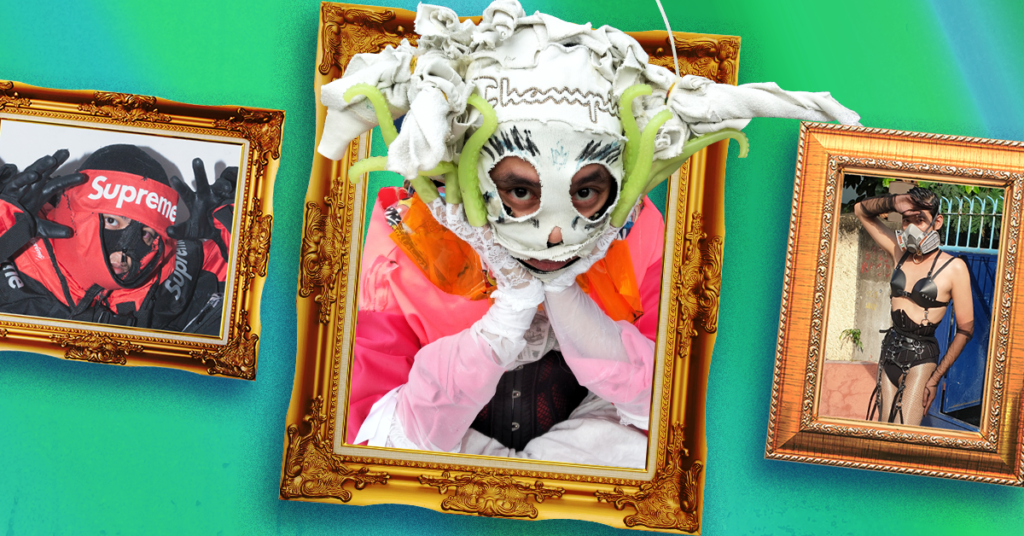
Supersonic Siomai is proof that drag isn’t always about puffy ball gowns and big, extravagant wigs. At its very core, drag is camp. And that is exactly what he embodies with his work. Aside from being a queen, Siomai is also a multimedia artist who focuses on photography and videography. He works closely with the local drag scene, and has covered many drag events. When asked to describe his drag style, he said it was “a parody of avante-garde attires at fashion shows, reconfugured into monstrous-looking, cartoonish proportions.”
What is Drag to you?
“Para sa akin, ang drag ay paggawa ng karakter na sumasalamin sa pakikibaka natin sa normal. O kaya’y isang pamamaraan na magpahayag ng mensahe ukol sa mga kasulukuyang hinaharap natin. Sabi nga ni Marshall Mcluhan: “The medium is the message.”
View this post on Instagram
What got you into drag, and how has it affected your life?
“Pop culture. Karamihan ng generation natin lumaki sa 90’s cartoons, tulad Powerpuff Girls na nandoon si Him and Si Pleakley ng Lilo & Stitch. Si Bugs Bunny rin, pero makaluma na yon. Hahaha!
Tsaka syempre, ang staple na RuPaul’s Drag Race. Itong show ang catalyst sa unang pagsuot ko ng stockings.”
Who is your Drag inspiration?
“Pam-pageant yung answer, pero yung mga taong nakapaligid sa akin. Gusto ko kasi na may reaction sila, kahit ba taas-kilay o ngiti pa ‘yan. Yun ang motivation ko to evolve. Kumbaga, give and take scenario din siya, na “oh, nakita niyo na kaya ko magsuot ng ganito habang tirik ang araw. Kaya niyo rin. I-try niyo, kasi walang makakakpigil sa inyo kundi sarili niyo.”
What is your favorite aspect of the art form itself?
“Again, yung reactions ng mga tao. Kasi hindi nila nakikita everyday ‘yan. Kaya, sana in my own little way of showing it online tsaka kapag nasa labas ako, mas maging accessible siya kahit kanino. Kasi ang drag ay para sa lahat – as an audience and as an artist.”
Do you feel that the art of drag has become more accepted and/or mainstream in our country as of late?
“Tolerated, not accepted. May mga hecklers pa rin when I’m outside, pero sabi nga ni Mama Ru: “if they ain’t payin’ your bills, pay /them b**ches no mind.” We have a long way to go para maintindihan tayo ng tunay. Hindi pa naipapasa ang SOGIE Equality Bill, at marami pa rin sa mga trans brothers and sisters natin ang nakakaranas ng dahas. Makakamit lang natin ang acceptance pag wala na sa atin ang nasasaktan at nahuhusgahan.”
What are some tips you’d like to give to those who are interested in dipping their toes into this form of self-expression?
“I-lipsync mo yan sa kwarto, Dzai. Kung nagmumuni ka, nagwawalis – gumawa ka ng sarili mong medley! Tsaka may mga groups sa Facebook na focused sa drag, tulad ng Pinoy Drag Queens. Tsaka Drag Playhouse, na kung saan sila ay nag-hohost ng events nationwide.”
Follow Supersonic Siomai on Instagram @supersonicsiomai and be on the lookout for his upcoming merchandise releases.
Eva Le Queen (@eva_lequeen)
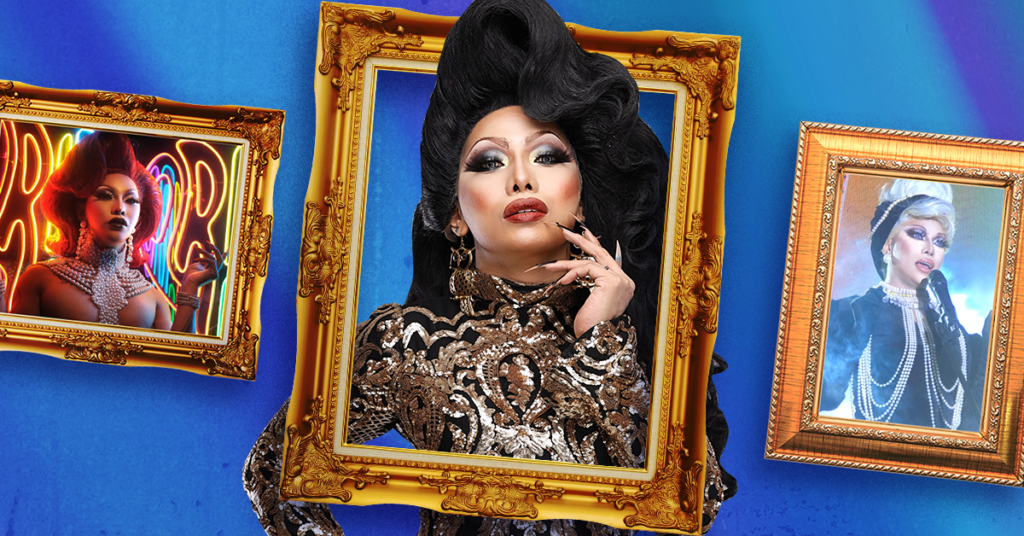
Last but not the least, the ever so stunning Eva Le Queen. Her name is very much fitting as she is a queen who quite literally runs the show. On top of being a drag artist, she’s also the hostess, producer, manager, and mother of Drag Playhouse PH.
“My drag is known for its rich and opulent aesthetic but as a performer, I primarily do “story-telling” lip-syncs. My performances usually involve humor and comedy that some may even consider political or satirical. But then as I always say, Drag is Political.“
What is Drag to you?
“Drag to me is like music to a singer. Or colors to a painter. Drag is a living art – an expression of one’s innermost feelings, thoughts, fantasies, pain or stories materializing into a character that comes to life. Drag therefore, can be very personal to an artist as it is entertaining to the audience. I have struggled a lot in the past and my Drag helped me cling on to dear life. There was a time that I had nothing else to look forward to in life but the days I will be doing my shows. Drag was the only thing that made me feel alive. And I have my drag to thank for keeping me together until I had better days.”
View this post on Instagram
Who or what got you into drag?
“Even back when I didn’t know Drag Queens exist, I always knew I love dressing up for parties and events at work. It officially started when me and my friends had our own little Miss Gay Pageants every year. That’s when I first donned a wig, make up, dress and fully transformed. I fell in love with the transformation while being fully aware that I am not a transgender. It was the art of being able to switch from myself into whoever I wanted to be that drew me into it. It was love at first Drag and I knew right then that this is something I would never stop doing.”
The next thing I knew, I joined an amateur Drag competition in Singapore and won 1st runner up, became a headliner in some of the biggest Pink Events and became the first Filipino Drag Queen to be inaugurated as a Resident Queen in a Local bar in SG. “
How has drag been since the Pandemic began?
“It was hard for all of us during the pandemic, but it was especially difficult to workers of the nightlife industry knowing that we will be one of the last establishments to be allowed to re-open. It felt hopeless and dark.
With being left with nothing but make up and wigs at home and so much time in my hands, that is when I started Drag Playhouse. It started out as an IG page to encourage my fellow artists to keep creating art and not give up on Drag. We started the #KeepDragAlive movement and started mounting virtual shows, events, podcasts and content that celebrates local drag. If there had been a silver lining during the Pandemic, it was the fact that Drag was brought closer to more people outside the clubs. More LGBTQ+ kids found drag as their refuge and Drag Artists were able to thrive through FB live shows and other online platforms.”
Who are your inspirations when it comes to crafting your looks, and/or performing on stage?
“My inspiration comes in different forms depending on what kind of experience with drag do our clients wish to share to the audience. I was raised in the 90’s so a lot of my references are classic divas like Whitney Houston, Mariah Carey and Celine Dion.”
What are some misconceptions that you hear, surrounding drag?
“People who are not familiar with drag mistaken Drag as a step to being trans. I have met a few people who, upon knowing that I do drag, asked if I will have breast and hip implants soon.
First, Drag is an artistic expression, not a Gender Identity or Expression. Although the art itself pokes at the human sexuality with its genderbending foundation, it is not a means for someone to express one’s gender entirely. Drag is something artists can do at will, where as dressing up to one’s gender expression is a way of life.
Second, Drag is not all about Female Impersonation. In the PH, there are many forms of Queer talents like stand-up comedy, singers, impersonation and Drag — each having its own skillset and expertise that artists work hard for to do well in their craft. As such, it would be respectful to drag artists to be identified for the specialty art that they do.”
Do you feel that the art of drag has become more mainstream in our country?
“I do feel the striking increase in interest of brands and shows about local drag. I have been invited to guest and speak in a number of shows in our local channels. Major brands and music labels have been asking Drag Playhouse for collaboration and campaigns. And especially with the recent announcement of Drag Den and Drag Race PH coming soon, Pinoy drag fans and enthusiasts were finally bridged to local drag artists that we only used to see inside the LGBTQ+ clubs on weekends. I believe it is going to be a great year for Filipino Drag.”
What are some tips you’d like to give to aspiring drag queens?
“To aspiring drag queens / kings, I have 2 words – intent and kindness.
People do Drag for reasons that are unique and personal to them. You can do it as a hobby, as an emotional outlet, or to put food on the table. If you will do drag, know exactly why you do it and for who you do it for. Be authentic in your purpose for drag so you will know how to respect your art and that of others.
2nd, always be kind. Because being in drag automatically sets you up to the spotlight and lay vulnerable to the opinions of so many people. In drag, you will always stand out and unless you learn how to be kind to others, you will never be able to truly walk with confidence and pride in you because the prejudice you use on other people is the same standard by which you will wear yourself down.”
Where do you usually perform?
“As of present, I mount and produce our own shows. From merely surviving to thriving, the #KeepDragAlive movement now aspires to bring the art of Drag to more people outside the clubs. You can now see me in Drag Brunches / MerienDrag sorties in QC, Drag & Dine events, Viewing Parties in Makati, Beach parties in La Union and Davao, and so much more.
We do hope that more establishments and venues take their chances with local drag queens and the local drag scene.”
Anything you want to promote?
“We would like to promote Drag Playhouse as a one-stop Drag-related content and events team. If you want Drag Queens on your next PR event, brunches or dinners, private or corporate, we do offer our hosting, entertainment and marketing PR services. Just send us over a note at our email at [email protected] or social media IG: dragplayhouseph and FB: facebook.com/dragplayhouseph
You may also follow my drag shows and where to catch me by checking my IG: eva_lequeen and FB: facebook.com/evalequeen.
Thank you so much for supporting local drag and #KeepDragAlive. Happy Pride!”
Now, Sashay away
Truth be told, the art of drag is larger than life. It grows bigger each day, and it would take a whole book to talk about every single aspect of its being. But one thing’s for sure: drag is a colorful escape from the bleakness of reality. It is, and has always been a symbol of freedom to many; freedom to express oneself, and to simply say ‘fuck you!’ to a world that still conforms to constricting societal norms of gender expression.
And there’s still a long way to go. We’re just getting started, mama.
Other POP! stories you might like:
18 LGBTQIA+ flags and the meanings behind their colors
‘Drag Race Philippines’ names Jiggly Caliente as a judge, teases ‘Untucked’
‘Drag Her’ lets you play your favorite drag queens in combat

